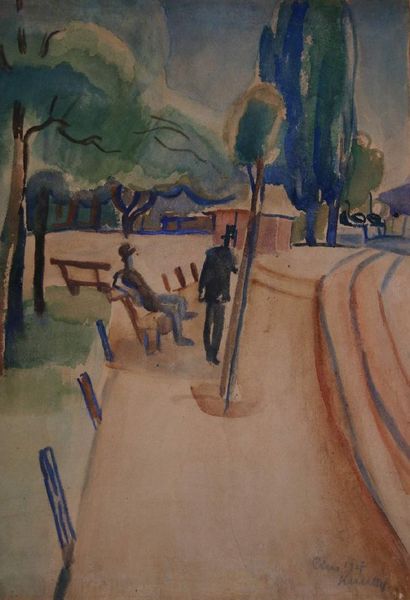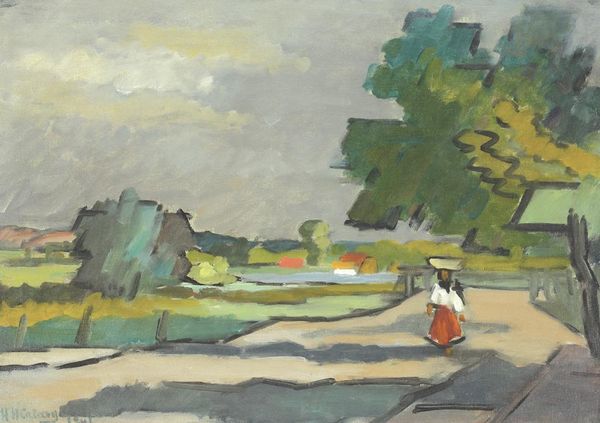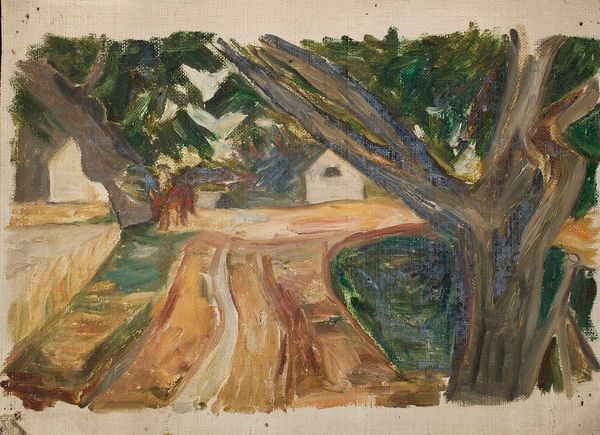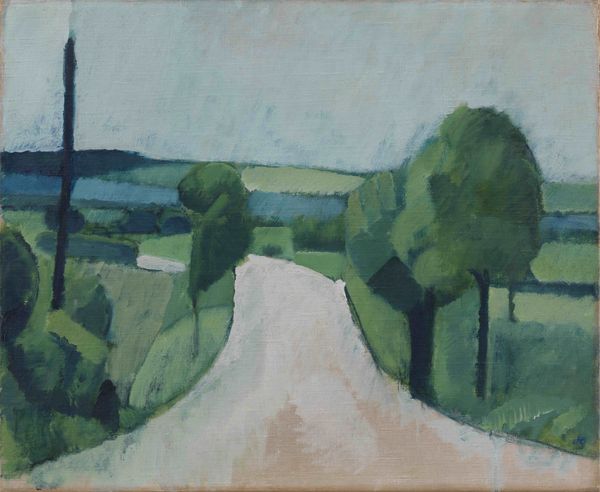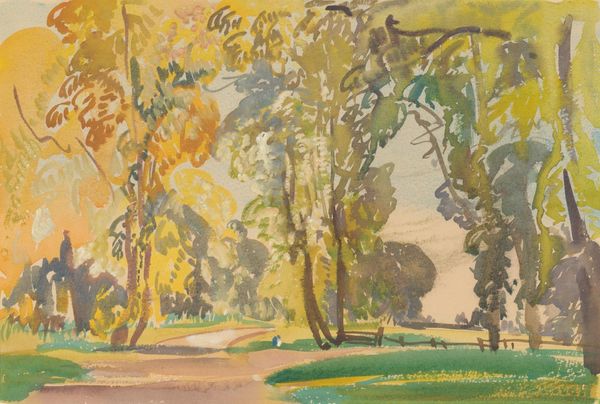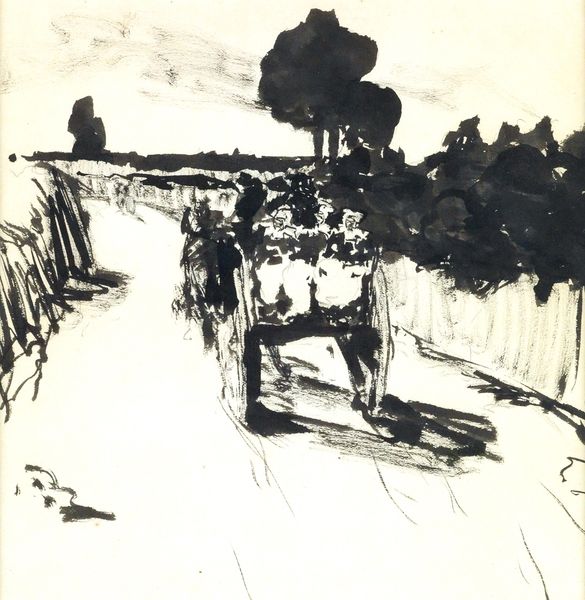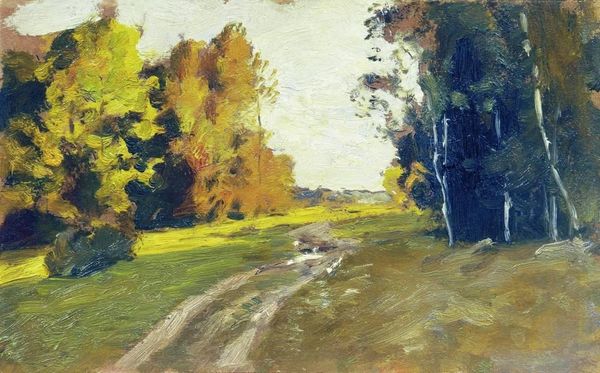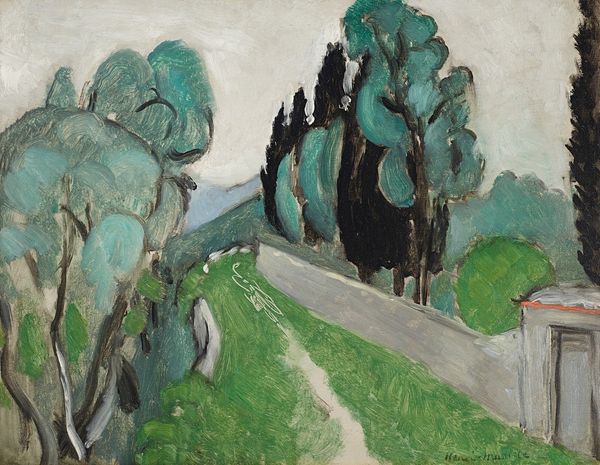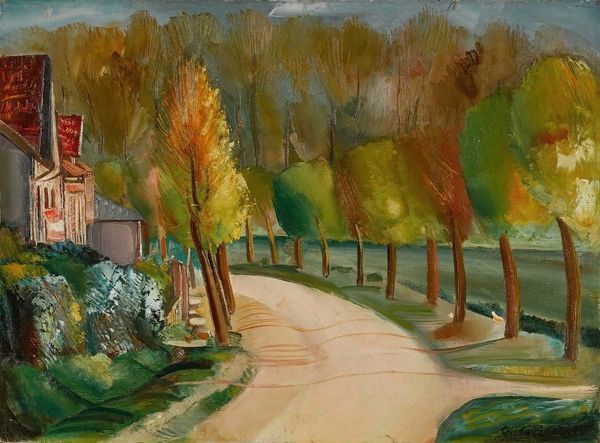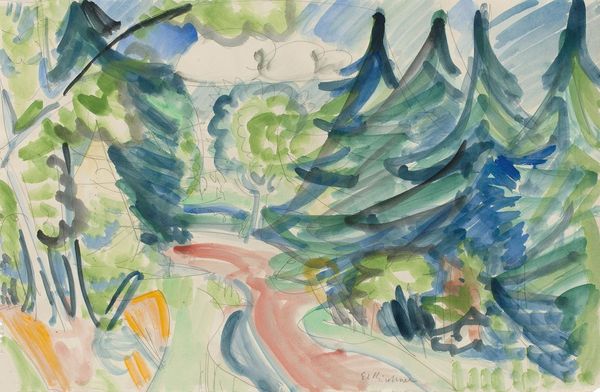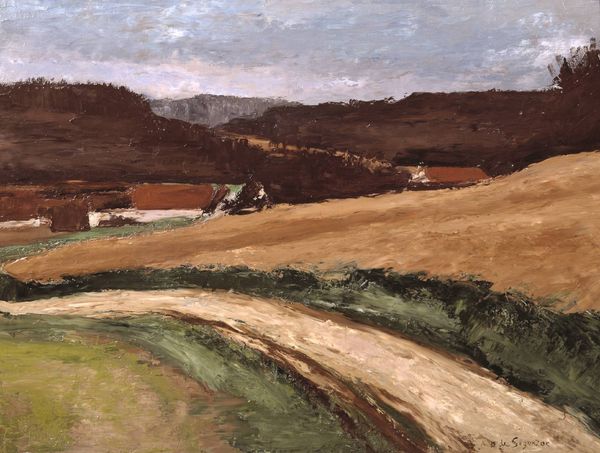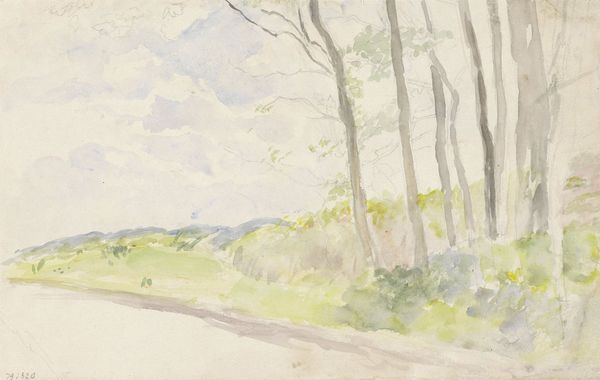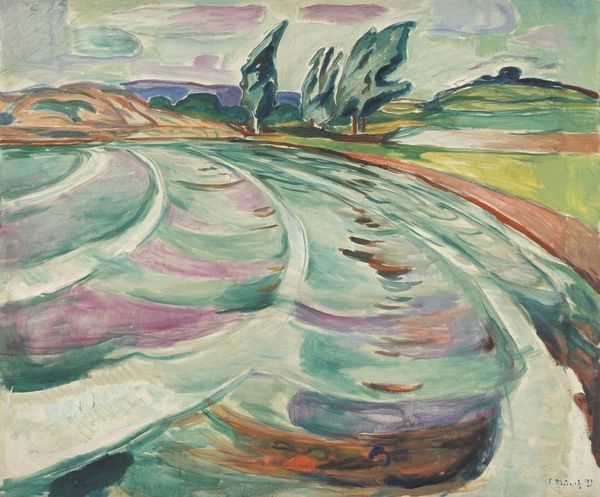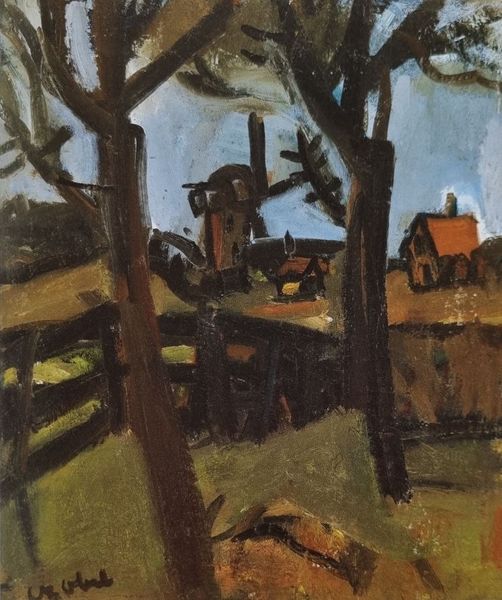
Copyright: Public domain US
Editor: Henri Matisse's "The Windshield," created in 1917, is rendered in oil on canvas, offering a somewhat unusual perspective. There's a sense of movement, combined with the stillness of the interior space. What do you see in this piece that perhaps I'm missing? Curator: Indeed, it is the dynamic interplay between stillness and kinesis that commands our attention. Note how the composition is structured by contrasting planar forms; the flat picture plane of the dashboard asserts itself against the implied depth of the receding road. The colour, too, works in counterpoint. The muted tones of the interior are juxtaposed against the vibrant greens and browns beyond the glass. Observe how that contrast accentuates the formal divide. Editor: So, you're focusing on how the forms and colours themselves create meaning. The geometry, if you will. I notice that too, how the rigid rectangle of the windshield frames the organic forms of the landscape. Is that tension deliberate, do you think? Curator: It's precisely through such formal tensions that the work achieves its affect. Semiotically, we might consider the windshield itself as a signifier—a threshold, or a boundary—between the subjective interior space and the external world. Matisse's skill lies in rendering this philosophical divide visible through his masterful handling of paint and perspective. Editor: That's fascinating, I had not considered the symbolic role of the windshield itself as a "boundary." Curator: Considering form as the content itself encourages a deeper understanding. A new way of seeing, wouldn’t you agree?
Comments
No comments
Be the first to comment and join the conversation on the ultimate creative platform.
